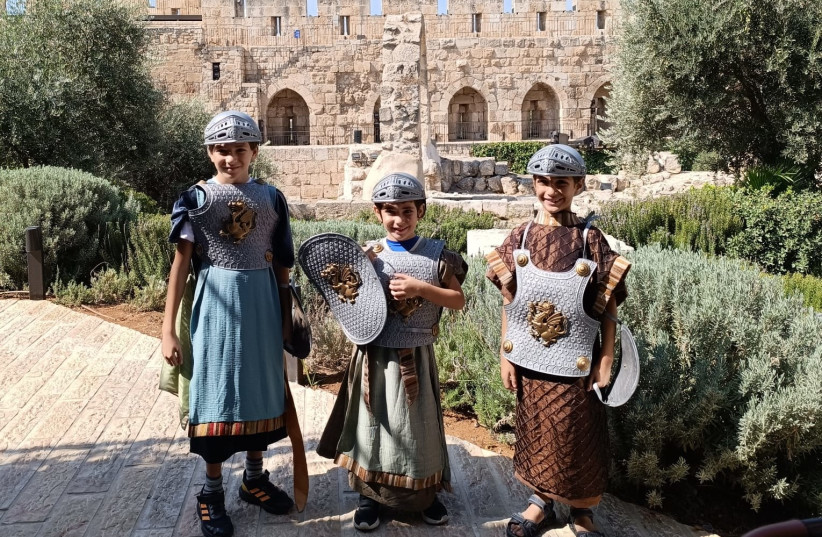“We are not refugees,” insisted Hannah L. from the northern town of Kiryat Shmona as she peered at a model of the Second Temple in the Tower of David Museum in Jerusalem last Wednesday morning. “We are evacuees.”
Her distinction is significant. While she and others from her town, participants in a complimentary tour of the museum, are hoping to return to a community and life intact, those from the South – whom she does call refugees – are facing a much more tenuous future.
The Tower of David Museum opened its doors just three days into the start of the war, offering hundreds of displaced families a chance to create some positive memories in the midst of enormous upheaval.
In lieu of charging fees, the museum is raising funds to enable those displaced to enjoy much-appreciated distractions, which include guided tours and children’s activities. Thanks to the donations received thus far, everything is free, including entrance to the museum, guides, and transportation.
When the museum learned that a mother who had been evacuated from Kfar Maimon was looking to make her daughter Rotem’s bat mitzvah memorable, the museum organized a special photo shoot in cooperation with a Jerusalem photographer, who also gave of her time and skills.

A bar and bat mitzvah initiative amid the war with Hamas
That’s how the museum’s Like that Smile bar and bat mitzvah initiative started. Since the beginning of the week, the museum has teamed up with more local photographers and families, and together they hope to provide an experience that will elicit a smile that is worth being framed.
The museum has become a meeting point for families from the North and the South who are now residing in many of Jerusalem’s hotels. The Ramat Rachel Hotel, in the city’s southwestern corner, is currently home to families from Kibbutz Dorot. When I visited on Shabbat, families were sitting on the lawns and around the pool, playing cards and board games and chatting amiably. An urn with hot water bubbled in the reception area, with homemade cakes in abundant supply.
In the hotel garden, mothers sat with their babies under a carob tree while older kids explored the founders’ tent. A social worker moved from group to group detailing activities on offer: yoga and meditation, a kiddies’ treasure hunt, an evening of music and song.
In a world less topsy-turvy, a stay at Ramat Rachel or at the Brown JLM hotel, where Hannah L. and her group from Kiryat Shmona are being accommodated, would be a treat. Now it is a last resort – a desperately needed safe haven from rocket fire, from the stench of death, from the brutal murder of loved ones.
Since October 7, civilians and institutions have stepped up to help in every conceivable way. Museums are perhaps the icing on the cake. “It is hard to find hope in the darkness right now,” admits Caroline Shapiro, external relations director at the Tower of David Museum. “But we are all trying to do whatever we can to restore some light.” ❖
